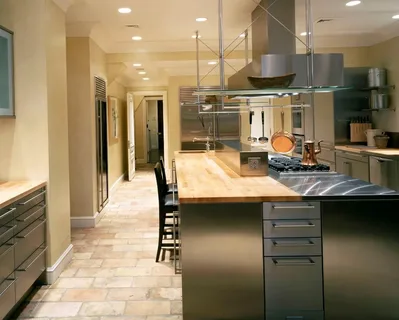Introduction:
Kitchens are the heart of every home, where culinary creations come to life, memories are shared, and traditions are passed down through generations. But have you ever stopped to think about how kitchens have evolved over time? From humble hearths to sleek, modern marvels, the design of the kitchen has undergone a remarkable transformation, reflecting changes in technology, culture, and societal norms. Join us on a culinary journey as we trace the evolution of kitchen design through the annals of history.
The Hearth: The Birthplace of Cooking
The story of kitchen design begins thousands of years ago, with the advent of fire. Early humans gathered around simple hearths, where food was cooked on open flames. These primitive kitchens were basic, with little more than a fire pit and perhaps a rudimentary structure for shelter. Yet, they laid the foundation for all future kitchen designs, demonstrating the importance of fire in the culinary arts.
The Birth of the Modern Kitchen: Ancient Civilizations
As civilizations advanced, so too did their kitchens. In ancient Egypt, kitchens were often located in separate buildings to minimize the risk of fire. They featured clay ovens for baking bread and pots for cooking stews. In ancient Rome, kitchens became more sophisticated, with innovations such as water-powered mills for grinding grain and brick ovens for baking. The layout of the Roman kitchen, with its focus on efficiency and organization, would influence kitchen design for centuries to come.
The Medieval Kitchen: Feasts and Fireplaces
During the Middle Ages, the kitchen took center stage in the grand households of Europe. These medieval kitchens were bustling hubs of activity, where armies of cooks prepared lavish feasts for nobles and royalty. They were typically located in the basement of a castle or manor house, with large hearths for cooking over an open flame. Spit-roasting was a common cooking method, and kitchens were equipped with massive fireplaces and iron hooks for suspending pots and pans.
The Industrial Revolution: From Hearth to Stove
The Industrial Revolution brought about profound changes in kitchen design. As urbanization and technological advances transformed society, so too did the kitchen evolve. The invention of the cast-iron stove revolutionized cooking, providing a more efficient and controlled source of heat. Kitchens became more standardized, with separate areas for food preparation, cooking, and storage. Innovations such as the icebox and the sink with running water further improved the functionality of the modern kitchen.
The Modern Kitchen: Efficiency and Innovation
In the 20th century, the kitchen underwent a dramatic transformation. With the rise of mass production and consumer culture, kitchens became more streamlined and efficient. The introduction of electric appliances such as refrigerators, dishwashers, and microwaves revolutionized the way we cook and eat. Modern kitchens are characterized by sleek surfaces, integrated appliances, and clever storage solutions. Open-plan layouts and kitchen islands have become popular features, blurring the lines between cooking and living spaces.
The Future of Kitchen Design: Technology and Sustainability
As we look to the future, the kitchen continues to evolve in response to changing lifestyles and environmental concerns. Smart technology is revolutionizing the way we interact with our kitchens, with appliances that can be controlled remotely and AI-powered assistants that help with meal planning and preparation. Sustainability is also a growing priority, with eco-friendly materials and energy-efficient appliances becoming increasingly common.
Conclusion:
From humble hearths to high-tech hubs, the kitchen has come a long way on its journey through history. Yet, at its core, the kitchen remains a place of nourishment, creativity, and connection. As we continue to innovate and adapt, one thing is certain: the evolution of kitchen design is far from over. So here’s to the kitchens of yesterday, today, and tomorrow – may they continue to inspire and delight us for generations to come.








